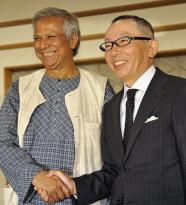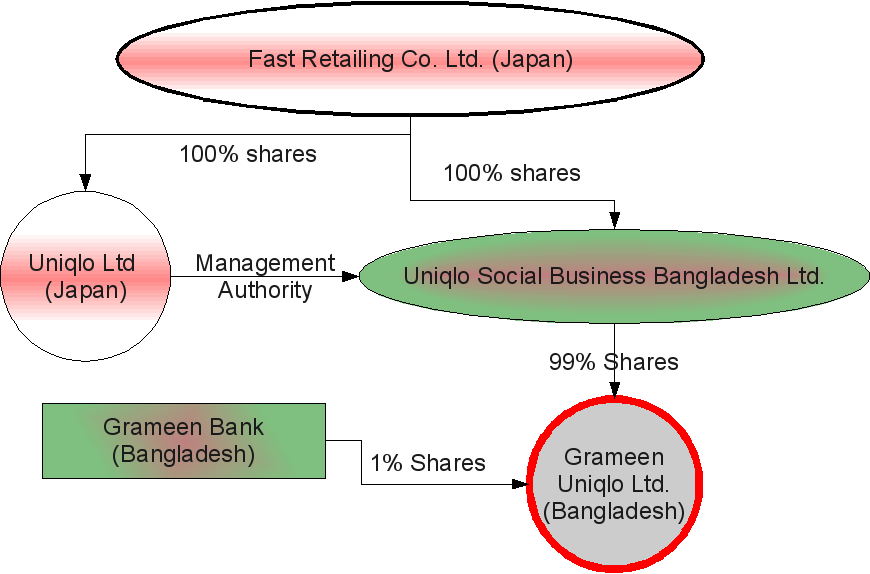
This is the sixth installment of an article series looking into Uniqlo’s CSR track record, and specifically into the reasons as to why they want to do business with Grameen. (Read Part 1, Part 2, Part 3, Part 4, Part 5 and Part 7)
—————————————–
Summary of previous posts:
Uniqlo – Japan’s largest, most dynamic, and fastest growing clothing retail chain – is investing into Bangladesh, notably by striking up a joint venture with Grameen bank. The question is: Why would they do that? This series of posts is looking at Uniqlo’s global strategy, their CSR track record, and what we can learn from that about their motives for the joint venture.
In the last posts, I had a closer look at Uniqlo’s CSR strategy’s three main strands: their Japanese hiring system, their Japanese diversity and inclusion strategy, their global recycling initiative and, finally, their supply chain monitoring efforts .
Today’s focus: Set up and structure of Uniqlo’s joint venture with Grameen.
As of September 2010 Uniqlo has officially moved into Bangladesh where they already established a liaison office in 2009. On the one hand, they will create a social business in the shape of a wholly owned subsidiary (UNIQLO Social Business Bangladesh, Ltd.), with the official aim as per press release “to help solve social problems, including those related to poverty, sanitation and education issues, in Bangladesh through the planning, production and sale of clothing.” [..]
On other hand there will also be a joint venture with the Grameen Bank (temporarily GRAMEEN UNIQLO, Ltd.), of which Uniqlo will hold 99% of the shares and Grameen Bank 1% (see picture).

In a common press release by Uniqlo and Grameen, it was stated that Fast Retailing (Uniqlo’s Japanese mother company) will be the first Asian corporation to start a social business with the Grameen Bank group. The aim of the joint venture was explained as follows:
“On the retail front, we will use the Grameen Bank Group’s borrower network of eight million people to help those living in poverty to develop job skills and provide them with opportunities to sell clothes door-to-door. […] Grameen ladies will become their own business owners by selling the clothing products in visits to neighbours’ houses,”
Looking at the overall picture, the Uniqlo-Grameen joint venture ties neatly into Grameen’s strategy to provide the people of Bangladesh with quality goods to for them affordable prices, while at the same time creating employment and boost the country’s GDP. In this context, Grameen has already struck up various collaborations with multinational corporations such Danone (food, in this case specifically yogurt), global water group Veolia, sportswear company Adidas and software company SAP.
Grameen group owns an export oriented knitwear manufacturing unit (Grameen Knitware) with a daily capacity of some 2.5 tons of fabric and 2000 pieces of clothing. However, the collaboration with Uniqlo, is a first ever with an Asian brand, as well as the first one with an mainstream apparel retail chain – and hence an important step for both join venture partners.
For Grameen it means to expand the range of products for their main target group – people earning less than 1$ a day, and to create additional employment and income generation opportunities in one of the poorest countries in the World, notably in an industry that is possibly the nation’s principle ‘bread winner’.
What the strategic importance for is Uniqlo of their relations with Grameen, this will be the topic of my next, and last, post of this series on the Uniqlo-Gramen joint venture.
—————————————–
This is the sixth installment of an article series looking into Uniqlo’s CSR track record, and specifically into the reasons as to why they want to do business with Grameen. (Read Part 1, Part 2, Part 3, Part 4, Part 5 and Part 7)

